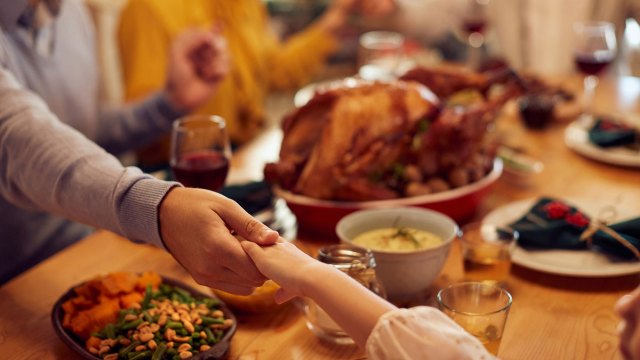In the midst of preparing for a family feast each year, we’ve also wrestled with how to talk to our kids about Thanksgiving. We want our children to learn from and do their part in changing the inequality in their world, and perpetuating the Thanksgiving story we were taught in elementary school runs squarely at odds with that mission.
Related: 10 Ways Parents Can Fight for Social Justice Every Day
But, it can be hard to know how and when to start having the true story of Thanksgiving conversation with kids. So first, remember that we don’t need to nail this by the time the turkey hits the table. This is ongoing and important work to do all year round. Following are a few ideas and resources that are helping our family to lay a foundation that, we hope, will help our kids respect and respond to real history in a way that supports a better future.
Build a Foundation for Knowing & Respecting Native Peoples
Start by teaching children real stories and truths about Native and Indigenous peoples, both from the past and the present. The more our children can be curious and aware of people for their strengths and rich history, the more they will push back on stereotypes and absorb the real history in a way that makes them compelled to act.
Here are a few easy ways to do this, even with very young children:
- Learn about the people who live or used to live on the land in your area. Use an app like native-land.ca to find out which people live/lived and which languages are/were spoken on the land on which you live. Search for “native people from {city, state or region}” or “indigenous people from {city, state or region}. Then, look for historically accurate accounts of how those people thrived, being aware of the limitations of the perspective of whoever has created them.
- Read books that help children come to know about Native peoples and prepare them to push back against stereotypes. For starters, check out this list of 15 beautiful picture books by Native authors about Native protagonists assembled by veteran Tinkergarten Leaders Erika McLemore, who is Creek-Seminole, and Cholena Smith-Boyd of the Shinnecock Indian Nation. As you select more books on your own, consult a reputable resource like Dr. Debbie Reese, a researcher focused on the representation of Native Americans in children’s literature. Through her expert advice, my family has learned how to pick books that are about specific tribes or Native peoples, avoiding the kind of generalizations that lead to stereotypes.
- Incorporate Native history into everyday outdoor play. As you are walking in a forest or along a river in your area, share something you’ve learned about the Native people who live/lived and what makes/made them special as a group or society.
- Continue learning. Read more from Indigenous Vision about how to build inclusive communities and support Indigenous youth.
Question History Together
When you feel your kids are ready, work with them to question and point out the mismatches between the accurate history and the often perpetuated Thanksgiving Story. To start:
- Get to know the true story of Thanksgiving story yourself. PBS Kids offers wonderful resources for parents and educators on how to approach Thanksgiving with authenticity. These resources also help us parents better understand, for ourselves, the story of the people we call Pilgrims, their interaction with the Wampanoag people, and the full history of the holiday we’ve come to know as Thanksgiving.
- Don’t be afraid to share with children that there is more to the story. It’s important to help them understand that the familiar story that has been shared for a long time is over-simplified and, as such, can even be hurtful to whole groups of people as well as the allies of those people. One way you can present the disparity to kids is, that although there was a feast between the Pilgrims and the Wampanoag, it happened during a time of terrible cruelty and unthinkable loss to the Wampanoag.
- Seek out additional tools for learning. This New York Times article has helped us use both age-appropriate resources and inquiry to start engaging our kids in conversation about Thanksgiving. For example, it has encouraged us to help our kids ask “Who is telling the story, and what is their perspective? How is this story different from other accounts and facts that we now know?”
Focus on Gratitude
While it’s essential that we help our children become more attuned to inequality and injustice, telling the true story of Thanksgiving doesn’t have to undermine our practice of sharing gratitude. You can even kickstart an annual gratitude tradition that’s respectful of Native history. Once you learn about the original caretakers of the land you live on, it becomes easy to express thanks for all they’ve done to preserve its natural beauty as part of Thanksgiving.
Be sure to help kids reflect on what they’re grateful for in their day-to-day lives, too. For many years, our family has focused our Thanksgiving on expressing thanks for our family, our health, our earth, and whatever else feels authentic to our kids. We engage in rituals like building a tree of thanks to make this even more concrete for them, and fun for us. This has extended far beyond Thanksgiving for us as well, helping us use simple rituals to develop a gratitude practice as a family and improve our own mental well-being in the process.
However you choose to celebrate this holiday, remember that while we cannot change history, we can make our children alert to who is telling and what needs to be told about the story. It’s the only way our kids will learn to do their part to make sure better stories are written in their time.











